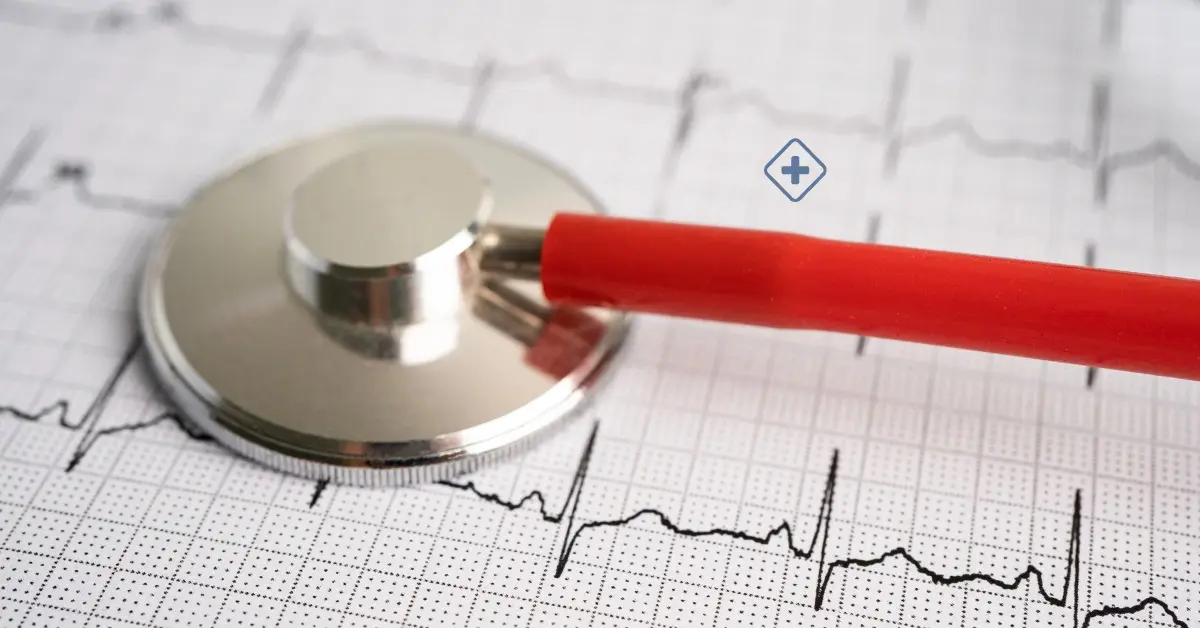
Dyslipidemia
Dyslipidemia occurs when your blood lipid levels are not regulated. It can be cholesterol, triglycerides, or lipoprotein cholesterol (HDL).

Dyslipidemia is a condition in which there are unhealthy levels of one or more types of lipids (fats) in the blood.
Blood contains three main types of lipids:
-
High-density lipoprotein (HDL)
-
Low-density lipoproteins (LDL)
-
Triglycerides
If you have Dyslipidemia, it means your LDL levels or triglycerides are too high. It can also mean that your HDL levels are too low.
- LDL cholesterol is considered the "bad" type of cholesterol. That's because it can build up and form lumps or plaques on the walls of the arteries. Too much plaque in the arteries can cause a Heart Attack.
- HDL is the "good" cholesterol because it helps remove LDL from the blood.
- Triglycerides come from the calories you eat, but they are not burned right away. Triglycerides are stored in fat cells. They are released as energy when you need them. However, if you eat more calories than you burn, you can build up triglycerides.
High levels of LDL and triglycerides put you at higher risk for heart attack and stroke. Low HDL cholesterol levels are linked to an increased risk of heart disease. It is important to become familiar with the recommended cholesterol levels according to age.
CHOLESTEROL: MYTHS AND FACTS
Myth: I only need to test my cholesterol levels if I am over 30 years old.
Fact: The American Heart Association (AHA) recommends that you first be screened at ages 9-11, then at ages 17-21. After age 21 it is recommended to test annually.
Myth: Only people who are overweight or obese have high cholesterol.
Fact: No matter what your weight, even if you stay fit, you can still have high cholesterol. Obviously, the probability of having high cholesterol is greater if you are overweight, if you lead a sedentary life and do not take care of your diet.
Myth: High cholesterol is only a problem for men.
Fact: Atherosclerosis is more common in women than in men. Pregnancy and premature menopause are some of the factors that can affect cholesterol levels.
Myth: My cholesterol levels are caused by my diet and physical activity.
Fact: It is indeed true, but they are not the only factors. They also influence: age, heredity, and weight. That is why we must take care of our diet, to keep our heart healthy and avoid heart disease.
Myth: If I take medication to lower my cholesterol levels, I no longer need to change my diet or lifestyle.
Fact: It is essential that if you have been found to have high bad cholesterol, you follow the treatment as your doctor indicates, but you also have to make adjustments in your day-to-day life. Start with a balanced diet and 30 minutes of physical activity daily.
Myth: Children don't have cholesterol problems.
Fact: Unfortunately yes. There are children who can inherit high cholesterol levels from their father or mother. It is a condition called Familial Hypercholesterolemia. A timely diagnosis with your Pediatrician will be the best way to avoid future risks.
Types of Dyslipidemias
There are two types of Dyslipidemias. Primary Dyslipidemia can be inherited, and secondary Dyslipidemia can be an acquired condition.That means it develops from other causes, such as obesity or diabetes. Dyslipidemia can refer to higher or lower levels than the normal range of fats in the blood.
Specific types of primary Dyslipidemia include:
- Combined familial hyperlipidemia. This is the most common inherited cause of high LDL cholesterol and high triglycerides. If you have familial combined hyperlipidemia, you could develop these problems in your teens or twenties. You are also at higher risk for early coronary artery disease, which can lead to a Heart Attack.
-
Familial hypercholesterolemia and polygenic hypercholesterolemia. Both are characterized by high total cholesterol. You can calculate your total cholesterol by adding your LDL and HDL levels, along with half of your triglyceride level. A total cholesterol level of less than 200 milligrams per deciliter (mg / dL) is best.
- Familial hypobetalipoproteinemia. This condition means that you have high levels of apolipoprotein B, a protein that is part of your LDL cholesterol. Hyperlipoproteinemia is a condition that can be primary or secondary. If you develop this condition, your body will have a hard time breaking down LDL cholesterol or triglycerides.
Causes of Dyslipidemia
Causes that can lead to Dyslipidemia include:
-
Smoking
-
Being obese and having a sedentary lifestyle
-
Food high in saturated fat and trans fat
-
Consuming alcohol in excess
-
Hereditary factors
Symptoms of Dyslipidemia
You can have Dyslipidemia and not know it. Like Hypertension, high cholesterol has no apparent symptoms. It is often discovered during a routine blood test at a Laboratory.
However, Dyslipidemia can cause some cardiovascular disease, which can be symptomatic. High levels of LDL cholesterol are associated with coronary artery disease (CAD), which is the blockage of the arteries in the heart, and peripheral artery disease (PAD), which is the blockage of the arteries in the legs.
Coronary artery disease can lead to chest pain and eventually lead to a heart attack. The main symptom of coronary artery disease is a pain in the legs when walking.
Risk factors of Dyslipidemia
If one or both parents have Dyslipidemia, the risk of developing it is high. Being older is also a risk factor for high cholesterol. Women tend to have lower LDL levels than men until menopause. It is at this stage that women's LDL levels begin to rise.
Other medical conditions that can increase the risk of developing Dyslipidemia include:
-
Type 2 Diabetes
-
Hypothyroidism
A low level of HDL cholesterol is associated with a high LDL level, although these levels do not always move together.
Diagnosis of Dyslipidemia
A simple blood test in our Laboratory will reveal if your cholesterol and triglyceride levels are high, low, or healthy. These numbers can change from year to year, so annual blood tests are recommended.
If you take medicine for Dyslipidemia, your doctor may ask you to have more frequent blood tests.
Treatment of Dyslipidemia
The most commonly used medication to treat Dyslipidemia is statins. Statins help lower LDL levels by interfering with the production of cholesterol in the liver.There are several types of statins. They all work a little differently, and some are stronger than others.
Your doctor may also prescribe other cholesterol medications, which can be taken in addition to statins. There are many pros and cons to consider when choosing medications to control cholesterol.
These non-statin drugs include:
-
Ezetimibe (Zetia)
-
Fibrates, such as fenofibrate (Fenoglide)
-
PCSK9 inhibitors
Living with Dyslipidemia
Try to maintain an adequate weight by eating a heart-healthy diet, and exercising regularly. If you are a smoker, you should quit.If you are concerned about your cholesterol and triglyceride levels, reach out to your doctor to discuss options for maintaining optimal levels.
If you have a family history of high cholesterol, be proactive in taking action for living a healthy life before your cholesterol levels skyrocket to dangerous levels.
¿When to see a doctor?
It is essential to consult a specialist in Cardiology if you suspect that your cholesterol and triglyceride levels may be at suboptimal levels, so he can make a proper diagnosis and prescribe treatment.
When consulting your Cardiologist, try to keep a record and detailed description of the symptoms, duration, and what you think triggered them. Also, mention any medications you are taking.
BlueNetHospitals - Hospital Los Cabos
BlueNet Hospitals.

Cardiac Ablation
Cardiac ablation is recommended when treatments are no longer effective or are not well tolerated to treat arrhythmias
Extrasystoles
Ventricular extrasystoles may not present symptoms; in other cases, they may cause unpleasant or alarming sensations.
Heart Murmurs
A heart murmur is an unusual sound that is heard when blood flows through the heart.
Cardiac Catheterization
Cardiac catheterization is an invasive procedure used to assess the heart and blood vessels by inserting a catheter into them.
- ¿Necesitas una cita con un Especialista?
- llámanos
- escríbenos
- Conéctate





